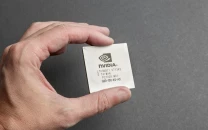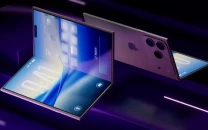Study reveals how mobile apps grab user attention
In a first, researchers empirically test how users' eyes follow popular mobile app elements
1601033110-0/women-use-smartphone-cropped-(1)1601033110-0-640x480.webp)
Mobile apps do not capture our attention the same way as applications on desktop computers, reveals a new study conducted by Aalto University researchers.
In the study researchers empirically tested how users' eyes follow popular mobile app elements.
"Apps appear differently on a phone than on a desktop computer or browser: they're on a smaller screen which simply fits fewer elements and, instead of a horizontal view, mobile devices typically use a vertical layout. Until now it was unclear how these factors would affect how apps actually attract our eyes," explains Aalto University Professor Antti Oulasvirta.
Samsung may discontinue high-end Galaxy Note smartphones
The research team used a large set of representative mobile interfaces and eye-tracking to assess how users look at screenshots of mobile apps, for both Android and Apple iOS devices.
The previous studies have concluded that when we look at images our attention is naturally drawn towards the center of screens and also spread horizontally across the screen, rather than vertically.
However, this is not true for mobile interfaces.
"It actually came as a surprise that bright colors didn't affect how people fixate on app details. One possible reason is that the mobile interface itself is full of glossy and colorful elements, so everything on the screen can potentially catch your attention - it's just how they're designed. It seems that when everything is made to stand out, nothing pops out in the end," says lead author and Post-doctoral Researcher Luis Leiva.
Jibran Nasir, others target of WhatsApp OTP scam
Further, the study sheds light on how different design elements grab user attention, Gaze, for example, points to the top-left corner, to explore or scan. Text plays a vital role, users focus on text elements of a mobile app as parts of icons, labels, and logos.
Images containing faces also attract users’ attention however, when posted with text eyes tend to focus more to the location of text. The average length of time users spent looking at images was similar to other app elements.
'Various factors influence where our visual attention goes. For photos, these factors include color, edges, texture, and motion. But when it comes to generated visual content, such as graphical user interfaces, design composition is a critical factor to consider,' says Dr Hamed Tavakoli, who was also part of the Aalto University research team.


















COMMENTS
Comments are moderated and generally will be posted if they are on-topic and not abusive.
For more information, please see our Comments FAQ